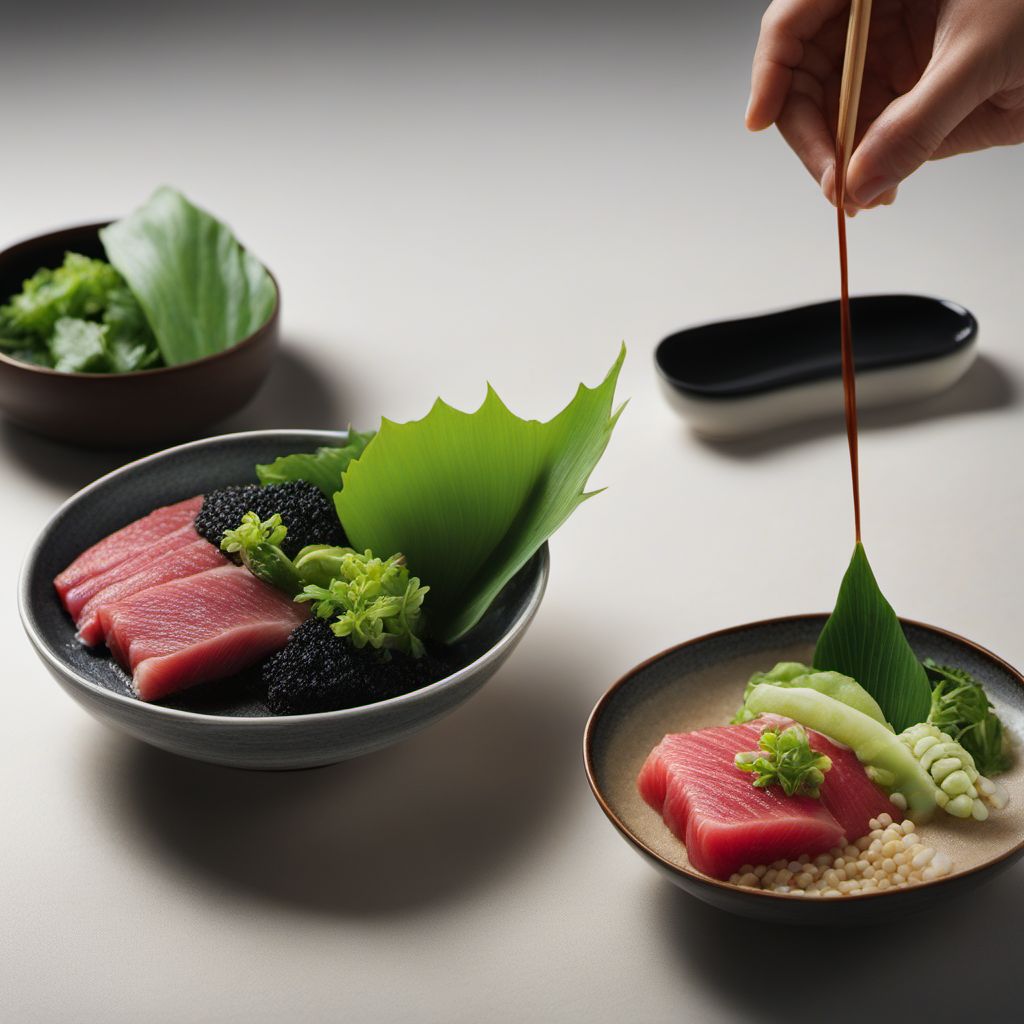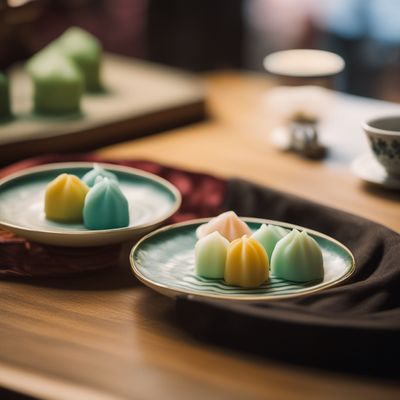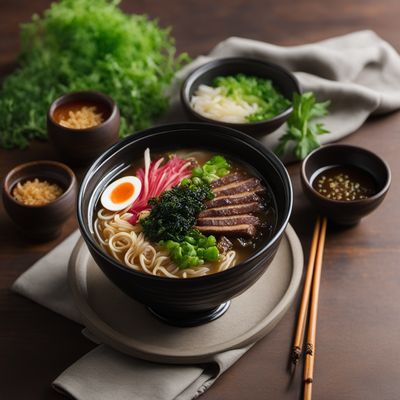
Recipe
Kaiseki Delight
Harmony on a Plate: A Journey through Japanese Kaiseki Cuisine
4.8 out of 5
Kaiseki is a traditional Japanese multi-course meal that embodies the essence of Japanese culinary artistry. It is a meticulously crafted dining experience that showcases the harmony of flavors, textures, and seasonal ingredients.
Metadata
Preparation time
45 minutes
Cooking time
30 minutes
Total time
75 minutes
Yields
4 servings
Preparation difficulty
Medium
Suitable for
Pescatarian, Gluten-free, Dairy-free, Low-carb, Nut-free
Allergens
Fish, Soy
Not suitable for
Vegan, Vegetarian, Paleo, Keto, High-protein
Ingredients
-
200g (7 oz) fresh sashimi-grade fish 200g (7 oz) fresh sashimi-grade fish
-
100g (3.5 oz) seasonal vegetables (such as bamboo shoots, mushrooms, and radishes) 100g (3.5 oz) seasonal vegetables (such as bamboo shoots, mushrooms, and radishes)
-
100g (3.5 oz) tofu 100g (3.5 oz) tofu
-
100g (3.5 oz) wagyu beef 100g (3.5 oz) wagyu beef
-
50g (1.8 oz) lotus root 50g (1.8 oz) lotus root
-
50g (1.8 oz) kelp 50g (1.8 oz) kelp
-
50g (1.8 oz) soybeans 50g (1.8 oz) soybeans
-
2 tablespoons soy sauce 2 tablespoons soy sauce
-
2 tablespoons mirin 2 tablespoons mirin
-
1 tablespoon sake 1 tablespoon sake
-
1 tablespoon sugar 1 tablespoon sugar
-
1 teaspoon sesame oil 1 teaspoon sesame oil
-
1 teaspoon grated ginger 1 teaspoon grated ginger
-
1 teaspoon grated daikon radish 1 teaspoon grated daikon radish
-
1 teaspoon wasabi 1 teaspoon wasabi
-
1 tablespoon sesame seeds 1 tablespoon sesame seeds
-
1 tablespoon green tea powder 1 tablespoon green tea powder
-
1 tablespoon sugar 1 tablespoon sugar
-
1 tablespoon hot water 1 tablespoon hot water
Nutrition
- Calories (kcal / KJ): 350 kcal / 1465 KJ
- Fat (total, saturated): 15g, 4g
- Carbohydrates (total, sugars): 15g, 5g
- Protein: 35g
- Fiber: 5g
- Salt: 2g
Preparation
-
1.Slice the sashimi-grade fish into thin pieces and arrange them on a plate.
-
2.Blanch the seasonal vegetables in boiling water for a few minutes until tender. Drain and set aside.
-
3.Cut the tofu into small cubes and lightly pan-fry until golden brown. Set aside.
-
4.Thinly slice the wagyu beef and grill it to your desired doneness. Set aside.
-
5.Peel and slice the lotus root into thin rounds. Blanch in boiling water until tender. Drain and set aside.
-
6.In a pot, combine the kelp, soybeans, soy sauce, mirin, sake, and sugar. Simmer over low heat for 30 minutes. Remove the kelp and set aside the soybeans.
-
7.In a small bowl, mix the sesame oil, grated ginger, grated daikon radish, and wasabi to make a dipping sauce.
-
8.In a separate bowl, combine the sesame seeds, green tea powder, sugar, and hot water to make a paste for dessert.
-
9.Arrange the sashimi, vegetables, tofu, wagyu beef, lotus root, and soybeans on individual plates. Serve with the dipping sauce and green tea dessert paste.
Treat your ingredients with care...
- Fish — Ensure the fish is fresh and of high quality to achieve the best flavor and texture.
- Wagyu beef — Use a hot grill or skillet to quickly sear the beef, as it is best enjoyed when cooked to medium-rare.
- Soybeans — If using dried soybeans, soak them overnight before simmering to ensure they become tender.
Tips & Tricks
- Use a variety of colorful seasonal vegetables to enhance the visual appeal of the dish.
- Experiment with different types of fish and vegetables to create your own unique Kaiseki experience.
- Serve the dishes in a specific order, starting with lighter flavors and progressing to richer ones.
- Take your time to appreciate each course and savor the delicate flavors.
- Don't be afraid to try new ingredients and techniques to personalize your Kaiseki journey.
Serving advice
Serve each course of the Kaiseki meal on individual plates or small bowls. Encourage guests to take their time and appreciate the artistry and flavors of each dish. Provide small portions to allow for multiple courses and a well-rounded dining experience.
Presentation advice
Arrange the ingredients on the plates with attention to detail and aesthetics. Use garnishes such as edible flowers, microgreens, or thinly sliced vegetables to add visual appeal. Pay attention to color contrast and balance to create an enticing presentation that reflects the elegance of Kaiseki cuisine.
More recipes...
For Japanese cuisine » Browse all
More Japanese cuisine dishes » Browse all

Dorai karē
Dry curry rice
Dorai karē is a Japanese curry dish that originated in the city of Yokosuka. It is a popular dish in Japan and is often served in restaurants and homes.

Karaage
Karaage is a Japanese dish of marinated and fried chicken pieces. It is a popular snack and often served as an appetizer in Japanese restaurants.

Wagashi
Wagashi are traditional Japanese sweets that are often served with tea. They are known for their delicate flavors and beautiful designs.






